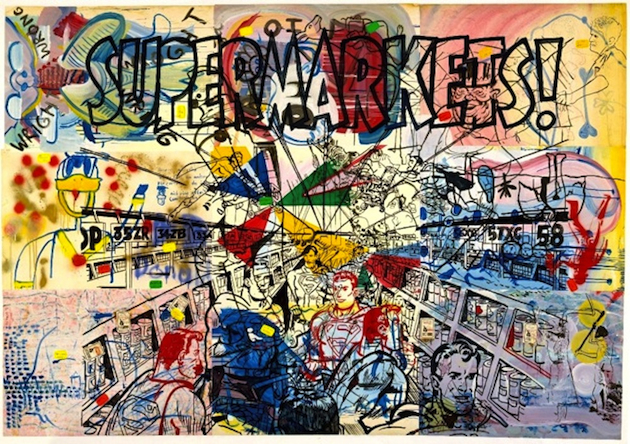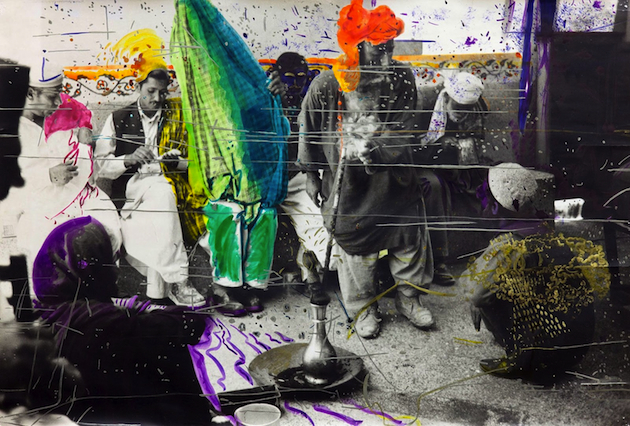
For the third time in twenty years, Tate Modern devotes an exhibition to Sigmar Polke (1941-2010, Germany), a master by many considered one of the greatest artists of all times. Titled Alibis, the huge retrospective organized by the London-based museum pays tribute to and retraces the extraordinary career of an experimenter who was able to play with a wide range of subjects, media and materials. Starting his artistic path in the ‘60s, when Pop Art was taking over the United States, Polke used the image of widespread symbols and characters of mass culture as a source of inspiration for his artworks, reinterpreting them in a personal and unconventional way. His work is more than a mere reproduction; it is a process of layering of mechanical and manual reproductions, which can be added in order to exploit most of the diverse options at the painter’s disposal.
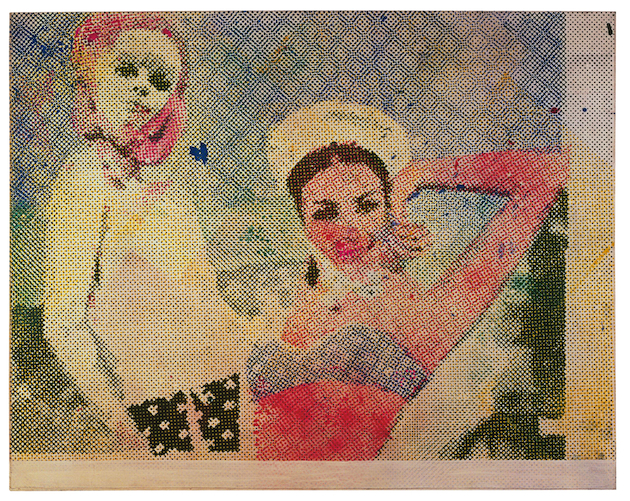
Painting, printmaking, photography, sculpture and drawing were just some of the vehicles employed by the German artist to dissect the differences between reality and its appearance. With a mocking, always clever, humour, Polke put on unpredictable parodies of political, social, moral and religious issues, as well as of their forms of authorities. In Alice in Wonderland (1971) we see the patterns of banal commercial fabrics stretched on the canvas and showing the movements of vigorous soccer players over which is painted a silhouette of a volley ball player put side by side to an image of Alice, accompanied by the caterpillar smocking a mushroom with its distinctive hookah. The reference to Alice’s growing and shrinking is connected with drugs experimentation (apparently figment of the artist’s experience) as well as the physical power and elasticity. While in the evocative series Watchtower (initiated in the ‘80s) there is a clear remark to the barbarities of the Nazism with its concentration camps and observation posts, symbols of past often denied and rejected.
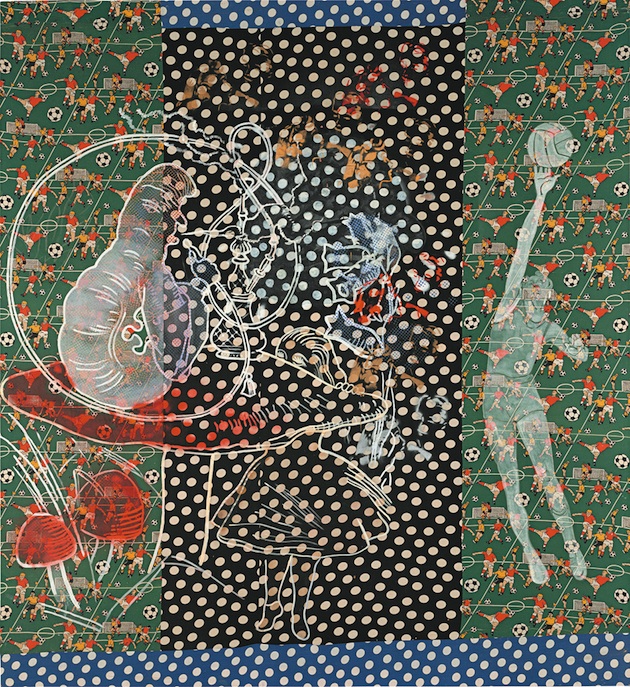
Topical facts are ingredients of an art – an undisputed example of conceptual painting – which wondered about its own nature, the perception of mass produced objects and the meaning of stealing or appropriating other artists’ identity, overlaying images with other images. Creating canvases that range from small to large scale, Sigmar Polke treated painting as a hybrid, which carried established conventions and innovations, figuration and modern abstraction, high and low culture.
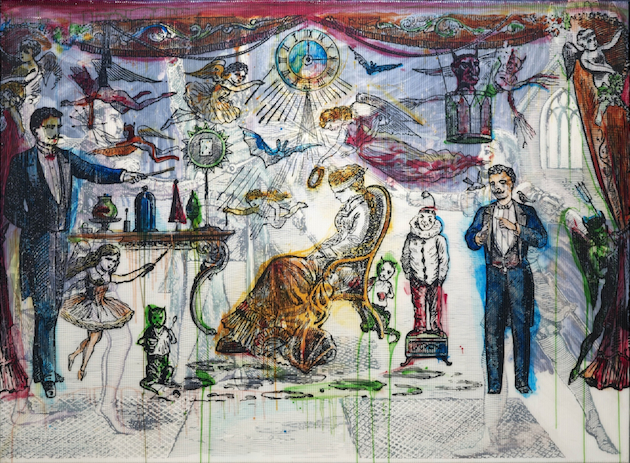
The exhibition organised by the Museum of Modern Art in New York with Tate Modern in London will run until 8th February 2015 and it is a must-see!
